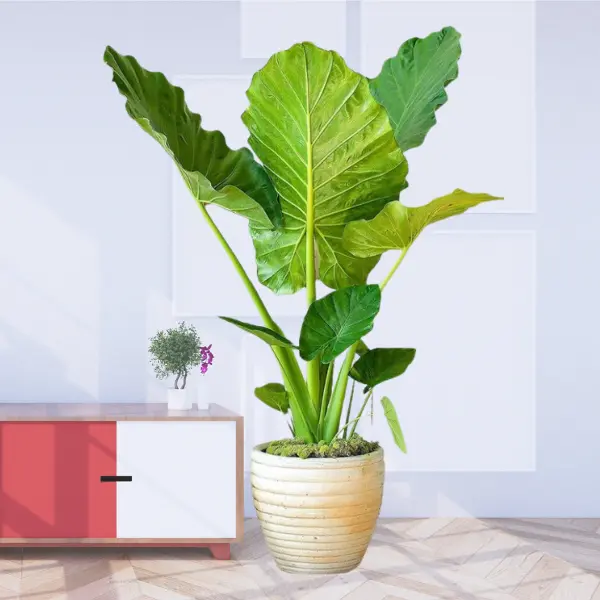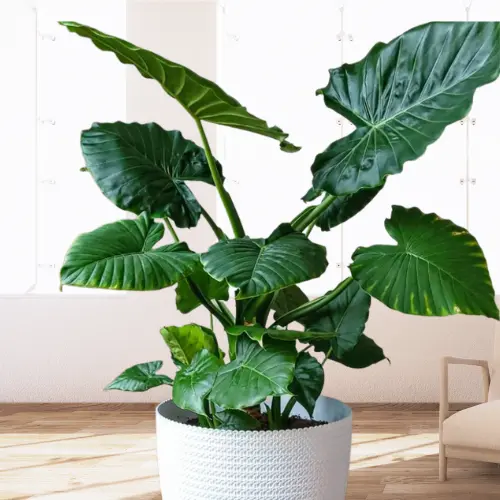Araceae Family has many gorgeous, attractive-looking, and ornamental indoor plants; Alocasia Calidora is one of them. Alocasia Calidora is a cultivar featuring large ruffled-edged attractive, lush green leaves. Owing to large foliage got the name ‘Calidora’ Elephant ear. These large leaves create a magnificent scenery with a catchy vibe of green leaves with contrasting light veins of the foliage, giving a tropical forest vibe to your place.
The Alocasia Calidora Elephant Ear plant has beautiful shiny green leaves that reflect the sunlight. This plant grows in a vase like shape, shooting it’s leaves upwards.
A grown plant has arrow-shaped ribbed leaves around three feet wide and six feet long; the overall plant can grow ten to fourteen feet tall. Alocasia Calidora is native to Tropical forests in Southeast Asia; however, it is now grown worldwide. It is one the most hardy of all the Elephant Ear plants with minimal care.
Allied Species: Alocasia Sarian, Alocasia Pink Dragon, Alocasia Lauterbachiana, Alocasia Silver Dragon, Alocasia Stingray, Alocasia Regal Shields, Alocasia Nebula, Alocasia Maharani, Alocasia Jacklyn , Alocasia Cuprea, Alocasia Black Velvet , Alocasia Cuprea
Related Products
Products | Name | Check Price |
Organic Perlite for Plants | ||
WONDER SOIL Organic | ||
Orchid Potting Bark Mulch |
Habitat & Ecology
| Botanical Name: | Alocasia Calidora |
| Family Name: | Araceae |
| Common names: | Elephant Ear, Persian Palm |
| Origin | Southeast Asia |
| Height | up to 10.00 feet tall |
| Spread: | 4.00 to 5.00 feet |
| Light Need | Full sun to part shade |
| Soil Type | Loam (Silt) |
| Planting Time | Spring / Summer |
| Flower Inflorescence | Spadix |
| Zones | USDA 10b, 10a, 11b, 11a, 12b, 12a |
How do you care for Alocasia Calidora?
Alocasia Calidora is unique and pretty rare. Just like various other members of the family Araceae, Persian Plam fancy for moist soil with good drainage. For the prevention of root rot, an adequate amount aeration of the roots is necessary. This plant tends to grow in the shade as well as in the partial sun.
It will be best if you read it all to explore what steps you must take to grow this unique plant at home. Let’s break it all!






